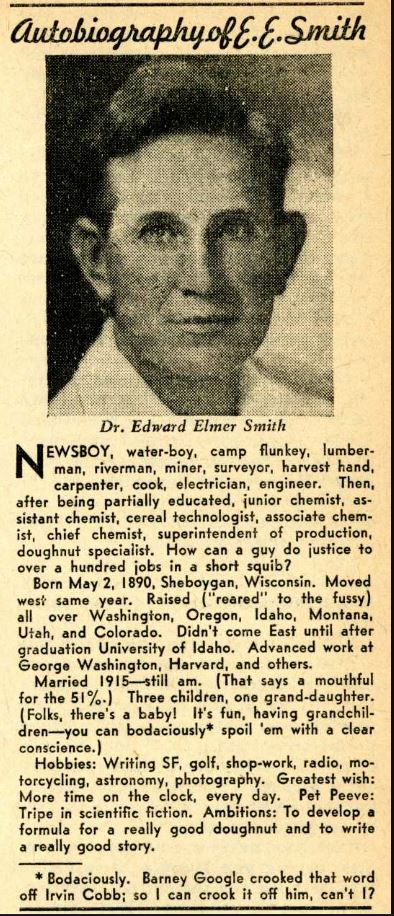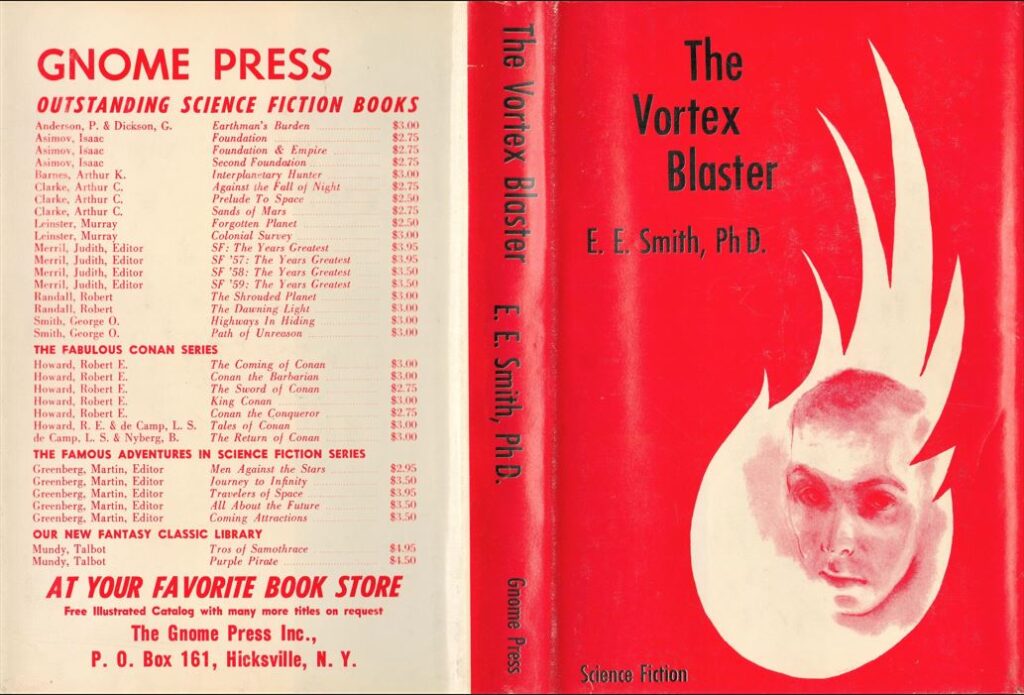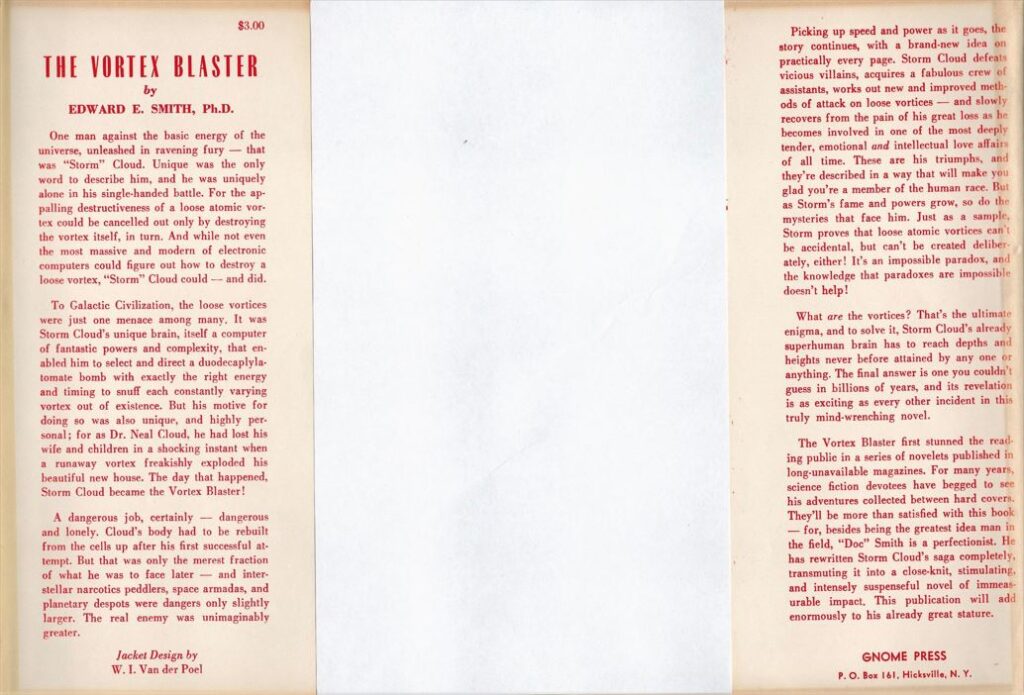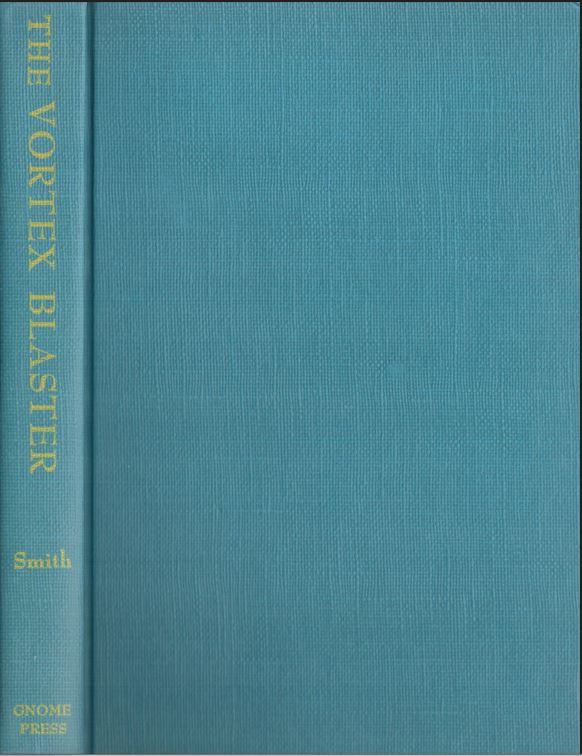Comments
Edward Elmer Smith (1890-1965) created two legendary series of super-science goshwow fame back in the 1930s, the Skylark of Space and the Lensmen, weaving epic space battles, valiant heroes, and consummately evil villains into adventures spanning the universe and thousands of years of time. He was the hugest name in the genre from the dawn of the pulp era until World War II and the second person named Guest of Honor at a Worldcon. Smith proudly possessed a Ph.D. in chemical engineering from George Washington University and always signed his stories Edward E. Smith, Ph.D., becoming known familiarly as “Doc” Smith. The dazzling superweapons featured in his stories might have led fans to believe he put his expertise to work on secret government projects, but his actual day job was the far more prosaic improvement of doughnut mixes.
One side branch to the stalwart space police saga known as the Lensmen series starred “Storm” Cloud, the only man who could control a duodecaplylatomate bomb to snuff out the deadly atomic vortices, earning him the title of Vortex Blaster. I’m not kidding: this is exactly what they don’t write ‘em like anymore. The advent of war rationing on wheat and sugar closed the doughnut factory so Smith rushed out a project of linked novelettes for the new Comet Stories magazine. That died just after “Vortex Blaster” appeared in the July 1941 issue. The two other stories that saw publication landed in the bottom-of-the-barrel Astonishing Stories: “Storm Cloud on Deka” in June 1942 and “The Vortex Blaster Makes War” in October 1942. The total wordage was nowhere near novel length.
Smith’s superscience exemplified the lost pulp works the postwar generation of small genre presses wanted to put into hard covers. His Skylark of Space was among the earliest, issued in 1946 as the last title from the Buffalo Book Company, reissued in 1947 by Hadley Publishing as its last title, and re-reissued in 1950 as the first – and last – book by F. F. F. Publishers. Despite this odd track record, Smith sold if the public could get his hands on him. Lloyd Eshbach did a campaign for the Buffalo Book edition and sold out the remaining 900 copies out of 1000 in a month. When he co-founded Fantasy Press, he set out to put all of Smith’s works into hardback editions.
He got eight into print before it was his turn to run out of money, after he had Vortex, rewritten and expanded by Smith, set into type. A few years later Gnome, too, had hit the edge owing so much money that no printers would touch his books. Eshbach, however, ran his own printing firm with 15 employees who needed to be kept busy. Greenberg cut a deal with him to supply the paper and get Vortex into bookstores. Everybody wins.
Vortex, like the Mundy books, therefore looks nothing like any of the other Gnome titles because of its unfamiliar typeface and text design. The paper, described by ESHBACH as “the worst stuff my pressman had ever run, so dusty that a wash-up was necessary halfway through a 3,000-copy run to remove the muck,” has now aged to a coconut shell brown. (Eshbach printed a limited edition on much better paper.)
Greenberg had one more scheme up his sleeve. He considered taking whatever unbound pages were sitting in storage and encasing them in a paper cover instead of the usual boards or cloth, similar to what he had done with the trade paperbacks a decade earlier. But they never got out the door. (See The Trade Paperbacks.) Only six copies are thought to have been bound this way.
Vortex did well enough that a second binding of 500 copies was cobbled together in 1962, almost Greenberg’s last desperation act. Although he published other titles after the first run of Vortex, you can say that here is where Gnome Press ends, with a whimper of a failed copy of a book written by a man who blasted away entire star systems and juggled the fate of billions. It’s not entropy that eventually gets us all: it’s irony.
Greenberg’s file copy of Vortex, inscribed to him by Smith, neatly brackets the history of Gnome alongside my inscribed file copy of The Carnelian Cube, Gnome’s first book. Greenberg did manage to push four more titles out the door, including a reprint of an old Smith classic. Their friendship may have continued, but their status as publisher and writer ended before the end of the next year.

Reviews
Floyd C. Gale, Galaxy Science Fiction, June 1961
Plotwise composed of pure nostalgia.
Alfred Bester, The Magazine of Fantasy and Science Fiction, December 1960
Mr. Smith never fails to transport us back to our childhood, and we’re properly grateful.
Contents and Original Publications
• Chapters 1-2 (Vortex Blaster,” Comet Stories, July 1941).
• Chapter 3 (“Storm Cloud on Deka,” Astonishing Stories, June 1942).
• Chapters 4-6 (“The Vortex Blaster Makes War,” Astonishing Stories, October 1942).
• Chapters 5-18 (original to this volume).
Bibliographic Information
The Vortex Blaster, by Edward E. Smith, Ph D., 1960, copyright registration 25Jun60, Library of Congress Catalog Card Number not given [retroactively 60-4973], title #82, back panel #40, 191 pages, $3.00, 3000 copies printed, 1960, 500 bound 1962?, 6? bound in wrappers, date unknown. Cover design by W. I. Van der Poel. “First Edition” stated on copyright page. No printer designated [actually Church Center Press, Meyerstown, PA]. Manufactured in the U.S.A. Back panel: 32 titles. Gnome Press address listed as P. O. Box 161, Hicksville N.Y.
Variants, in order of priority
1) (CURREY A1) Hardback, blue boards, spine lettered in yellow.
2) (CURREY A2) Hardback, gray cloth, spine lettered in red.
3) (CURREY A3) Wrappers, gray stiff paper, blank spine, black lettering on cover.
Images







